Best Wine Appellation Types in the World
Brunello di Montalcino is a red Italian wine produced in the vineyards surrounding the town of Montalcino in the Tuscany wine region. Though it was initially considered to be made from a separate grape variety named Brunello, it was later discovered that the grape used in the production of the wine is in fact Sangiovese.
Regarded as one of the most renowned Italian wines, Brunello di Montalcino was awarded the designation of origin (DOCG), and it is produced with 100% Sangiovese grapes. At first, it comes off as juicy and spicy, with notes of oregano and balsamic, and it may develop strong aromas of cherry and leather.
This full-bodied, red wine is made from Nebbiolo grapes in a small area in Piedmont with a unique soil and climate conditions. It has been produced since the 19th century, and soon after its invention, it became a favorite among the Italian and European nobility.
According to Italian DOCG regulations, Barolo needs to matured for at least 36 months, while those aged for five years carry the prestigious Riserva label. It is a robust, but elegant wine, which is very high in tannins that soften with aging.
THE BEST Barolo Wine Appellations
Vintage Port is a style made from the best grapes of a single year harvest. It is considered the most prestigious and the highest quality port style. Vintage is not produced every year, but only when port houses decide that the wine is of sufficient quality.
Vintages make only about 2% of all port production, and in the best years, all port houses will declare a Vintage. The decision to declare a Vintage can be made after Portugal’s Port Wine Institute had approved it. Vintages are barrel-aged for two to three years and are not filtered before they are bottled.
Rías Baixas is a Spanish appellation located along the Atlantic coast in Galicia. The entire region is divided into five subregions: Salnes Valley, O Rosal, Soutomaior, Ribeira do Ulla, and Condado do Tea. There are several permitted grape varieties, but Albariño prospers and dominates in the entire region.
Other permitted grapes that are sometimes used include Treixadura, Loureiro, Caiño Blanco, Torrontes, and Godello. The styles slightly differ depending on the subregion and the production, but most of the wines hail from the region are pale golden, fresh, and aromatic.
Châteauneuf-du-Pape is the largest and the most important appellation in the southern part of the Rhône Valley that comprises of five communes. Most Châteauneuf-du-Pape wines are predominantly red blends, with a small percentage of whites.
Officially eighteen grape varieties are allowed, including different colors of the same grape variety. However, the most common are Grenache, Mourvèdre, Syrah, and Cinsault grapes. These rich wines can greatly differ in style, but they are mainly characterized by the spicy and earthy aromas of red berries, black pepper, tar, and leather.
THE BEST Châteauneuf-du-Pape Wine Appellations
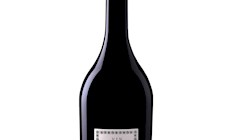
Domaine de la Solitude
2021 Châteauneuf-du-Pape Vin de la Solitude Red
James Suckling - 99 points 2024
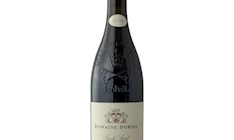
Vinsanto is a dessert wine hailing from Santorini. It is made with sun-dried Assyrtiko and Aidani grapes. Despite a surprisingly similar name, this Greek wine does not have much in common with the more famous Vin Santo from Tuscany. The grapes are sun-dried for approximately fourteen days and are then fermented and aged.
This wine has to be oak-aged for a minimum of two years, but most producers opt for longer maturation. The result is a sweet and dense wine packed with flavor and rich in aromas. Although both grape varieties are white-skinned, Vinsanto will attain a luscious golden color that tends to turn into darker amber hues as the wine ages.
Naousa is a Greek appellation located in the region of Macedonia. The wines produced under the designation are made exclusively from Xynomavro—an indigenous Greek grape that is often compared to Pinot Noir and Nebbiolo. Naousa wines display the perfect balance of tannins, sugar, and acidity, while the typical aromas and flavors include a complex combination of savory notes that are often reminiscent of dark and red fruit, tomatoes, plums, earth, tobacco, herbs, and spices.
Naousa ages exceptionally well and is rarely enjoyed young. Because of its complexity and finesse, it is often cited as one of the finest Greek wines. An ideal pairing for this tannic wine is game, lamb, tomato-based sauces, rich stews, sausages, mushrooms, and aged cheese.
Burgundy is a world-famous French wine region that produces some of the best and most expensive wines in the world. Located in the east-central part of France, the area is dominated by Pinot Noir and Chardonnay. Other red and white grapes such as Aligoté, Pinot Gris, or Gamay are also used, but on a much lower scale.
Burgundy has more than 100 approved wine-growing areas, all regulated by a complex quality system that divides the region into grand cru, premier cru, village wines, and regional appellations. The wines are greatly influenced by terroir and show great diversity in flavors and aromas.
THE BEST Burgundy Wine Appellations
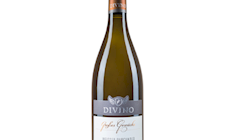
Ribera del Duero is a Spanish appellation located in several provinces of Castilla and Leon, in north-central Spain. The region is best known for big and bold varietals made with Tempranillo, also known as Tinto Fino or Tinta del Pais.
The blends have to include 75% Tempranillo, while other permitted varieties include Garnacha, white Albillo, and international varieties Malbec, Merlot, and Cabernet Sauvignon. Ribera del Duero wines are built to age. With time, they develop complexity and become more balanced.
Most of the wines are deeply colored, full-bodied, and well-structured with bright acidity and aromas of ripe fruit, vanilla, and spices. Aging requirements are similar to those in Rioja. Crianza is the youngest, aged for two years and 12 months in oak. Reserva labels are aged at least three years with at least 12 months in oak, and the Gran Reservas have to be aged for five years, including two years of oak aging.
MAIN INGREDIENTS
Barbera d’Asti (DOCG) is an Italian red wine produced on the hilly vineyards in the provinces of Asti and Alessandria in Piedmont. The minimum of 90% Barbera grapes must be used in its production, while the other 10% may be made up with Freisa, Grignolino or Dolcetto varieties.
The wines are mostly ruby red and well-balanced, with notes of red and black fruits, while Superiore varieties, which are aged for at least six months in wood, may have hints of spiciness. The wine pairs well with dark meat, mushrooms, matured cheese, and braised greens.
Best Wine Appellation Producers in the World
Louis Roederer is one of the most prestigious and oldest independent Champagne houses, synonymous with luxury, tradition, and innovation. Founded in 1776 in the heart of Champagne, in the city of Reims, this family-run house has been nurturing the art of producing exceptional Champagnes for centuries, captivating connoisseurs worldwide.
The true rise of the house began in 1833, when Louis Roederer took over the family business and introduced a revolutionary approach—unlike other producers who purchased grapes, he decided to own and cultivate his own vineyards. This decision allowed him complete control over quality, terroir, and the unique style of his Champagnes, establishing the Louis Roederer brand’s distinctive signature.
AWARDS
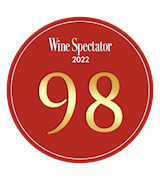
Wine Spectator - 98
2022
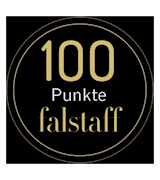
Falstaff - 100

Falstaff - 99
BEST Louis Roederer Wines
Krug is one of the most prestigious and revered Champagne houses, renowned for its unwavering commitment to excellence and the artistry of champagne-making. Founded in 1843 by Johann Joseph Krug, this family-run house has always adhered to a philosophy of uncompromising quality, emphasizing the individuality of each vintage and terroir.
Krug stands apart with its unique approach—each bottle of champagne is crafted from meticulously selected wines from different years and vineyards, creating unparalleled depth, complexity, and richness. Their most iconic champagne, Krug Grande Cuvée, embodies this philosophy, blending up to 200 wines from over 10 different vintages to achieve perfect harmony and sophistication in every edition.
AWARDS
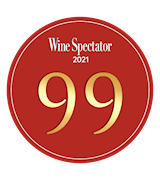
Wine Spectator - 99
2021

Falstaff - 100

Falstaff - 99
BEST Krug Wines
AWARDS
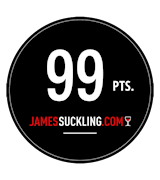
James Suckling - 99 points
2024

Falstaff - 99

Vivino - 4.6
BEST Champagne Billecart-Salmon Wines
The Champagne house Bollinger, founded in 1829 in Aÿ, France, stands as a symbol of excellence and tradition in the world of champagne. Bollinger is distinguished by its unique style that blends power, refinement, and complexity, allowing fruity aromas to fully express themselves.
Their wines, such as the iconic Special Cuvée, reflect richness and depth of flavor, thanks to a careful selection of grapes and traditional winemaking methods. For nearly two centuries, Bollinger has remained true to its family values and independence, which has enabled the house to preserve authenticity and consistent quality in its champagnes.
AWARDS

Falstaff - 100

Falstaff - 99

Vivino - 4.6
BEST Bollinger Wines
Charles Heidsieck is a prestigious Champagne house founded in 1851 in Reims, France, by Charles-Camille Heidsieck, famously known as “Champagne Charlie.” He was a pioneer in popularizing Champagne in the United States during the 19th century, earning a strong reputation thanks to his entrepreneurial spirit and charisma.
The house is renowned for its historic cellars, known as “crayères” — ancient chalk caves dating back to Roman times — which provide ideal conditions for aging Champagne. These cellars are recognized as a UNESCO World Heritage site. Throughout its history, Charles Heidsieck has earned acclaim from numerous royal and imperial families, a testament to the exceptional quality of its wines.
AWARDS

James Suckling - 95 points
2024

James Suckling - 94 points
2024

James Suckling - 93 points
2024
BEST Champagne Charles Heidsieck Wines
For over 175 years, Pol Roger has stood as a symbol of uncompromising quality, refined craftsmanship, and understated sophistication in the world of champagne. Remaining proudly family-owned through five generations, the house is celebrated for its consistent style—fresh, balanced, and remarkably elegant.
Every bottle is produced and aged in Pol Roger’s own deep chalk cellars, where ideal conditions allow the wines to mature slowly and gracefully. Known for their fine bubbles, purity of structure, and vibrant freshness, Pol Roger champagnes are equally at home in grand celebrations or quiet moments of indulgence.
AWARDS

Falstaff - 100

Vivino - 4.6
BEST Pol Roger Wines
Founded in 1729, Ruinart holds the distinction of being the oldest established champagne house, born from a vision rooted in enlightenment, craftsmanship, and a deep appreciation for both nature and art. For nearly three centuries, Ruinart has remained true to its refined, luminous style, with Chardonnay at the heart of its identity.
Ruinart champagnes are celebrated for their purity, freshness, and bright expression. Known for their finesse and delicate minerality, they offer subtle citrus and floral notes that bring lightness and vibrancy to every sip. Their uniquely shaped bottles – inspired by 18th-century wine flasks – reflect a perfect harmony of tradition and modernity.
Champagne Egly-Ouriet is a renowned Champagne house celebrated for its commitment to biodynamic and organic farming practices. With a focus on producing wines that express the true character of their terroir, the house has become a pioneer in the natural Champagne movement.
Founded by the Egly family, this boutique winery produces wines from some of the finest Grand Cru vineyards, ensuring that only the highest quality fruit is used. The house is known for its low yields, long maturation periods, and minimal intervention during fermentation.
The Taittinger Champagne House stands as a symbol of elegance, refinement, and unwavering commitment to quality. Founded in the heart of the Champagne region, this family-owned winery nurtures a long tradition of crafting exceptional champagnes that captivate the world with their freshness, finesse, and depth of flavor.
Unlike many major houses, Taittinger remains firmly in family hands, ensuring a personal dedication to every step of the winemaking process. Their vineyards span an impressive 288 hectares, with a significant portion planted with Chardonnay — a varietal that lends Taittinger champagnes their distinctive, sophisticated character.
AWARDS

James Suckling - 99 points
2024
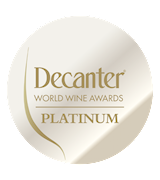
Decanter World Wine Awards - Platinum
2024, 2021, 2020, 2019, 2017
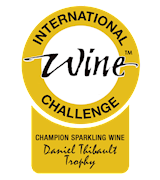
International Wine Challenge - IWC Champion Sparkling Wine 2020 - Daniel Thibault Trophy
2020
BEST Taittinger Wines
Dom Pérignon is more than a name – it is a symbol of prestige, artistry, and an unrelenting pursuit of harmony between intensity and elegance. Inspired by the legendary Benedictine monk who helped shape the future of champagne in the 17th century, the house today embodies innovation, legacy, and timeless luxury.
Every bottle of Dom Pérignon is millésimé – made exclusively from a single vintage. It is only produced in years when nature offers grapes of truly exceptional quality, and each vintage is a unique expression of that year’s character and energy. Dom Pérignon champagnes are known for their layered aromas, precise structure, creamy texture, and seamlessly integrated freshness.
AWARDS

Falstaff - 100

Vivino - 4.6
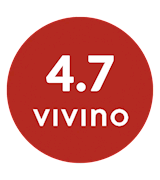
Vivino - 4.7
BEST Dom Pérignon Wines
TasteAtlas food rankings are based on the ratings of the TasteAtlas audience, with a series of mechanisms that recognize real users and that ignore bot, nationalist or local patriotic ratings, and give additional value to the ratings of users that the system recognizes as knowledgeable. For the “Top 100 Wine Appellations in the World” list until April 12, 2025, 4,763 ratings were recorded, of which 3,529 were recognized by the system as legitimate. TasteAtlas Rankings should not be seen as the final global conclusion about food. Their purpose is to promote excellent local foods, instill pride in traditional dishes, and arouse curiosity about dishes you haven’t tried.












































































































































































































